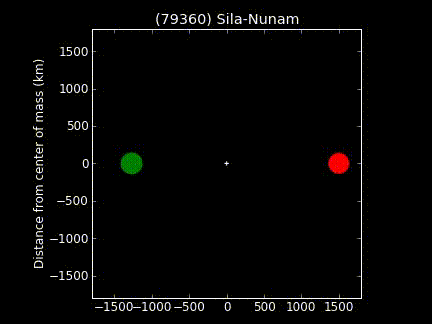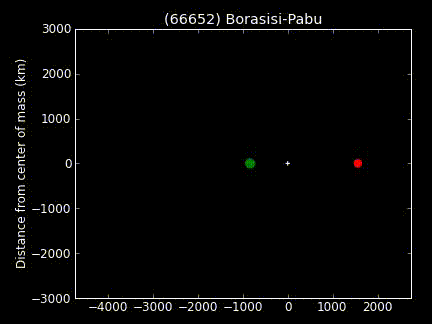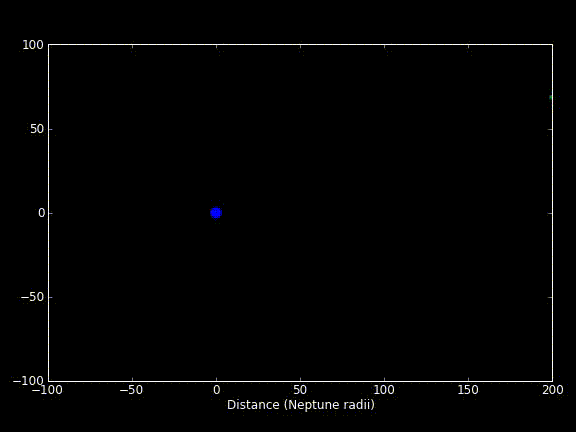Research & Projects
Trans-Neptunian Binaries
A Trans-Neptunian Object (TNO) is a broad name for all the things in our solar system beyond Neptune. At least 15% of these TNOs are not actually single objects, but rather pairs (or triplets) of smaller objects in orbit around each other. If the TNO has two parts, it is Trans-Neptunian Binary (TNB). In most known TNBs, the larger of the two objects is only slightly brighter (and thus bigger) than the smaller one. That means they orbit around their common center-of-mass, much like a binary star (and unlike a moon around a much larger planet).
 |
 |
While some TNBs are on very wide orbits with periods of many years, most are on very tight orbit with periods of just a few days.
Captured Large Exomoons
Most exoplanets discovered so far are much larger than the Earth, and all the planets in our solar system larger than Earth have many moons in orbit around them. While not all giant exoplanets are far enough from their star to have moons (hot jupiters should have no moons), many of the giant planets discovered by Kepler are far enough from their star to have moons on stable orbits. The moons of giant planets in our solar system are much smaller than their host planets, and that would make them hard to detect with current methods.
However, it is possible that in the chaos of early planet formation, a giant planet could have captured a former terrestrial (Earth-like) planet. This could happen through a binary-disruption process, where a small planet and its moon fly close to a giant planet and either the moon or small planet are captured in orbit around the giant planet. We think this is how in our solar system Neptune captured its large moon Triton. The animation below shows a system like Earth-Luna flying past a Neptune-like giant, and the Earth-like planet (green) being captured in orbit around the giant (blue) while the old moon is ejected (red).

After an Earth-like planet is captured in orbit around a giant, its orbit needs to stabilized from being very elongated and randomly oriented to a nice circular orbit over the giant's equator. I showed that this stabilization can happen very fast, typically about 1 million years (a blink of an eye in geologic time). That means that if an Earth-like planet is captured by a giant planet, there is a good chance that it will survive long enough for us to see it. Large exomoons are possible to detect with current transit methods, but it is still very hard. No large exomoons have been found just yet, but they might be soon.
Here's an article about this at Science News.And another on Universe Today.